https://www.newschoolers.com/videos/watch/946812/Drawn-From-Here
Words by: Jamie Walter
If you came here expecting to watch Eric Pollard throw mind-blowing tricks and XL cliff hucks in a film that flips the script of what’s possible on skis, we have a spoiler for you. In the words of Pollard himself, “The kind of moves that usually get a big reaction from a premiere crowd are notably absent in my films.”
Indeed, Drawn From Here is far different than most of the “ski-porn”-centric movies or web edits we see en masse today. The film instead dives into Pollard’s personal journey over the last several years, both on and off the snow. Throughout the 20-minute-long piece, viewers are taken through three acts that highlight his artistic influences, injury, ingenuity, tied together - of course - by his skiing. The last time we saw Pollard on the big screen was back in 2015 when he played a central role in Nimbus Independent’s After the Sky Falls. Since then, his influence on skiing has been felt, but his practical absence in front of the lens has left us wondering what he’s been up to all this time. Today, we find out why - and it was certainly worth the wait.
In Drawn From Here, Pollard shows, as perhaps only he has earned the right to do, exactly the way he ticks. His opening statement on his creative process clearly draws a connection between nature, art, and skiing that has been teased in his work throughout his career. The intentional transitions between moments of inspiration, creative obsession, and finally completion, are an intimate glimpse into the way his mind works. The visuals are supported with a medley of quotes; without saying a single word himself, Pollard is still able to deliver his message artfully and clearly.
The film also addresses Pollard’s gruesome leg injury sustained in Russia back in 2013 - one that almost took him away from skiing forever. He has not been one to talk much about the experience, but in Drawn From Here, we get the raw view not only of its severity but the monumental effort it took him to get back into skiing. Pollard’s tenacity and ingenuity allowed him to overcome a trauma that would have permanently sideline most others. While he may allude to the experience altering who he is as a skier, the same old Eric Pollard style seems unchanged in the third chapter of the film.
Some viewers might question how little of the film actually features skiing, but the power of the film ultimately comes from the fact that everything Pollard does is directly related to skiing. Every moment highlighted - the influence he pulls from the world around him, his creative energy, his motivation, gets channeled back into skiing in some form; in his artwork, product designs, custom ski boot builds, or silky-smooth style on skis that we know and love. The film is more art piece than ski movie, just as Pollard himself is graduating to the art world. But one thing will always remain central in his work - Pollard’s passion for skiing and the influence he has drawn from it over the years.
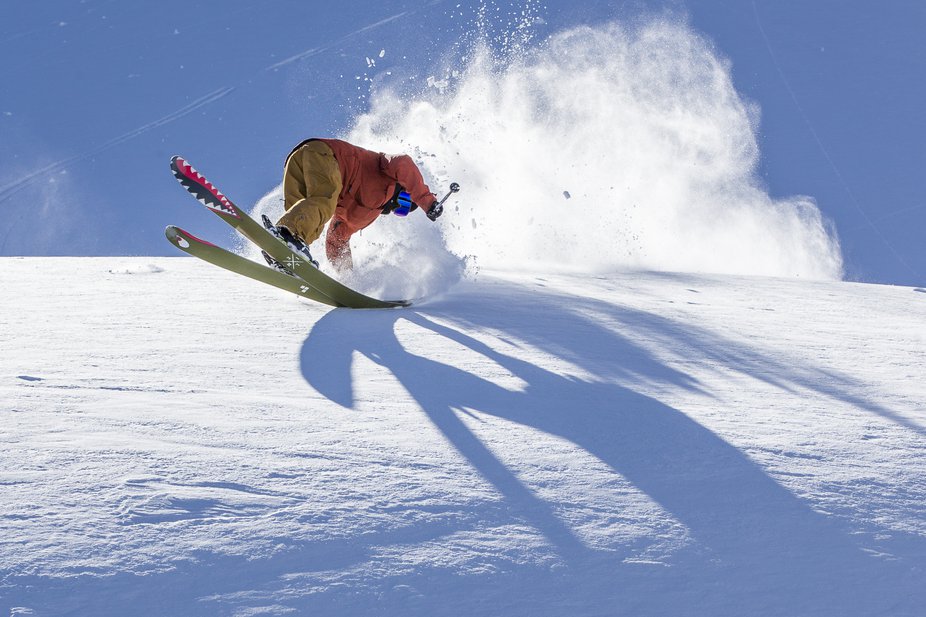
Pollard flexing his bomber inspired Line Magnum Opus, 2016 - Photo: Jamie Walter
***
With this being such a personal piece, we decided to reach out to Pollard to hear directly from the man himself about the film and what it meant to him. If you’re interested in ordering his book, the link can be found here.
Your latest film project, Drawn From Here, is set to release online in a few days. Give us a little overview of the film and what it’s all about.
It’s a difficult one for me to breakdown. This project is very much about capturing skiing the way I see and experience it. It also chronicles my journey, and my perspective in a way that I’ve not been able to communicate before.
Viewers will notice that there was a lot of creative effort that went into making this piece - from the deliberate transitions between visuals that show the sources of inspiration behind your work and the products or art itself, to the custom music track by Zach, sourcing all the audio quotes, storyboarding, editing... How long has this project been in the works? How much work was required to compile all the supporting visuals to get to a point where you felt it was ready?
Yeah, I put everything into this film and book. I’m actually a bit embarrassed by how much time and effort it has taken. This project, more than any, has blurred the line between passion and neurosis. I regularly go all-in on projects, whether they are films, drawings, ski designs, etc. This film was a way for me to capture show how much thought and effort I put into my work. It took three years to create. However, I also produced a lot of other films, designs, outerwear, skis, and art while working on this film and book.
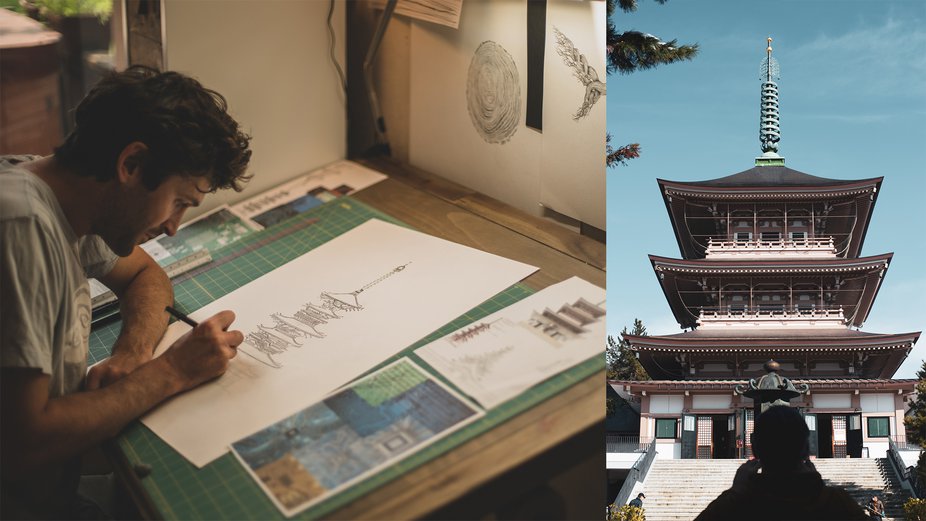
Pagoda Inspiration and illustration - Photos: Nimbus
What was the process of putting together this film like? Did you take on a lot of the editing yourself?
I was the producer, director, director of photography, editor, graphic designer, well, I could go on and on, but suffice to say, that I was involved in every aspect of the film. I feel like people get the idea that Nimbus and or I have a huge team of pros at our disposal, but it’s not that at all. It’s literally me working out of my cousin’s garage.
The process was really fulfilling. I love to ski and capture it. That’s really all this project is. What was unique about this film, was the nature of what I had to say. I set out to capture my process of working on designs, art, and skiing, and how they are interrelated. I wanted to show how I transpose inspiration from one world into different forms of output. The film is all about connecting the dots for the audience. I had a shot list of elements I needed to capture to do that. I worked with two camera operators for the project; Jeff Wright and Zach Almader. Jeff is a pro, and a DP in his own right. I had worked with Jeff on “After The Sky Falls”, and together we had arrived at a style that we share. Zach is my younger cousin and didn’t have any camera experience other than with a consumer drone that he was familiar with. I was able to teach Zach about photography, cinematography, and establish a style with him. Now, at the end of this project, Zach is a pro. He's fluent in a number of camera systems and has already shot commercials for REI and segments for Warren Miller. I’m very proud of him. Working with cinematographers is everything. It’s making sure you are intentional, that you shoot with a reason. We were very deliberate with our shooting, I had specific aspects of my life that I wanted to capture. Zach and Jeff were incredible to work with. I found that we were able to strike a great balance, a true collaboration, where they not only shot what and how I asked, but also added so much in the way of their own ideas, vision, and approach.
It did take a long time to amass all the imagery necessary to give a comprehensive picture of what goes into my work, and how connected it all is to skiing. For instance, the shadow segment with the slow-motion tight shots where I’m skiing the wood Pescado skis, we shot in the winter of 2016! That was so long ago, but we knew we had it in the can, so we checked it off the list and just moved on. It was just one foot in front of the other, but yes, it took a very long time.
The samples were really difficult to find. I had a lot I wanted to say, ideas I wanted to get across. I had created a storyboard and had a structure to adhere to, but I wanted to create a narrative from a variety of voices. To do that, I required a lot of samples. I listened to books, podcasts, shows, and the like, non-stop to find the right audio to work with. I recorded hours of samples, cut and organized them in an editing project, and exported them into 2 hour-long tracks with temp music underneath them. I listened to those tracks repeatedly until I knew them inside and out, then I went back into the project and pulled the quotes I wanted to use. I crafted it into a defined story arc consisting of 3 acts. Next, I created the project on a mood board in order to understand how I could use the samples and match them with the visuals to tell the story.
Music is a big part of cinema. We agonized over the music for this film, at one point scoring the entire thing ourselves only to revert to licensing music. Music is an opportunity to set the tone. I’ve created so many films and made so much music with a variety of people. To me, it’s part of your style as a filmmaker, just like how you might have a style as a skier.
Shit, it has been one hell of a project. It really has just been me, Jeff, and Zach. Ideating, shooting, editing, trying things out, revising. Most of it has been me attempting to take the footage and audio, and create a film from it. I didn’t even attempt to keep track of the hours I put into editing this thing.
Maybe enough about that, I could go on and on about this project. What I can say, is that I enjoyed the process of making the film.
Despite all the mediums you feature in Drawn From Here, does skiing continue to be your favorite creative outlet? What does it allow you to do that these other forms can't?
Skiing is the basis for all the other mediums I do. All the design ideas I have, the ways to make different equipment, concepts for art I create, all of it comes from skiing. I’m not as great of a skier as I was, but I can honestly say that it’s the most important of all my creative outlets. It is the root source of inspiration for my life.

Pollard's Woodgrain Osprey Illustration taking flight - Photo: Alister Buckingham
You mentioned in your last interview with Newschoolers that it was almost too painful to ski after your injury. Has that pain settled at all? How much do you get to ski and snowboard these days?
I find that if I’m focused on something, I can block out the pain. Sometimes I’ll ski something that takes all my focus, and as a result, I won’t feel any pain. Interestingly, by the time I’m on the cat track or lift, once my mind is not focused, the pain returns. It’s all good, I’ll take it. I feel so lucky to be able to ski and to board. The biggest problem is that hard snow hurts. It just wrecks me. I have to really choose my days on hard snow.
Family is a huge theme of the film, how important were they in getting you back to where you are now?
My family was absolutely crucial to my recovery. They were the rock, the thing I could count on when everything else what out of my control. I can never thank my wife, kids, parents, and friends enough for what they did for me. Never. I realize that people go through far more terrifying things in life than what I experienced, however, this injury has changed me. I was reeling for some time, and when I re-broke my leg the very next year, I had another 8 months on the sidelines to think about my life.
You don't seem like the guy to get too deep into social media, but how much skiing do you still watch? You were always a 'style' guy, whose style are you enjoying watching these days?
I live in an area where I don’t have cell reception or internet access, so I don’t get to see too much. When I do see something, I’m always blown away by how a skier’s style has been shaped by where they grew up sliding. I’ll throw out some names of cats who have repeatedly turned my head: Parker White, Duncan Adams, Laurent De Martin, Par, Phil Casabon, Rob Huele, Torin Yater-Wallace, Sammy Carlson, Adam Delorme, Tatum Manod, Angel Collinson, Karl Fostvedt, Erik Olson, Hadley Hammer, Leo, Sami, Dylan Siggers. I could go on and on. I love watching different styles and approaches. And then there are Legends in the sport who I still love to watch. The likes of Pep, Michelle Parker, Tanner, Thovex, Benchetler, Abma, Ingrid Backstrom, Sean Pettit.
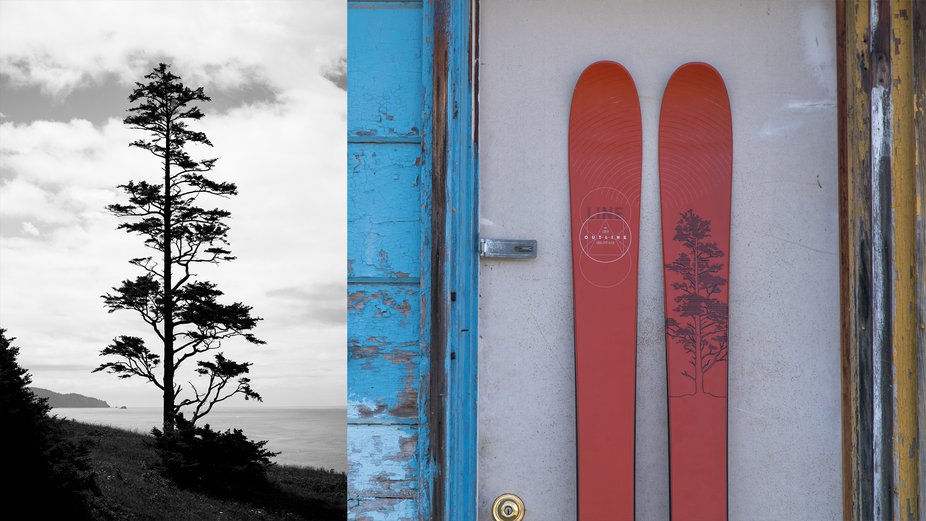
Spruce tree, meet skis - Photo: Nimbus
You premiered the film at the High Five festival in Annecy a few weeks ago, and Twig mentioned that it received some of the most attention of the night, including multiple standing ovations as the credits rolled. After all that you put into this project, were you nervous to debut it? How did it feel to receive such a positive reaction that evening?
I was super nervous. To be honest, I don’t like to show my films at premieres. I like to watch other’s films, but showing my stuff is difficult. It’s hard to be in the same room with a bunch of people who are ultimately judging something you created. In that way, art shows and film premieres can be tough for me. On top of that, the films I create are typically not made to entertain someone in a premiere setting. The kind of moves that usually get a big reaction from a premiere crowd are notably absent in my films. I was anxious, and a bit self-conscious when we showed Drawn From Here. The theatre was quite as hell when people were watching, and the inner monologue going through my head was pretty crazy. I remember feeling silly for putting so much of myself into a ski film, and for flying halfway around the world to premiere it. The standing ovation blew me away, I think I will remember that for the rest of my life. For anyone who was there that night, thank you, that meant so much to me. I didn’t even know how to react, I was speechless.
Tell us about the book that you are releasing alongside this project.
The book is a way to elaborate on the film and some of the subjects I touch on. The book shows the full canon of my work spanning two decades, whereas the film only shows my current input, process, and output. My perspective has manifested in numerous modes; product designs, art, graphic design, skiing, and cinema. When you put it into a film, you have to abbreviate the content in the interest of keeping the audience’s attention. In the book, I was able to get a bit more granular. Much of the still imagery is mine, but I was able to sprinkle in some gold imagery from the likes of Christian Pondella, Justin Wiegand, Alex O’Brien, Juha Laine, Alister Buckingham, Felix Rioux, Aaron Blatt, Zach Almader, Endre Løvaas, Alessandro Belluscio, Scott Conerly, Jeff Wright, Matt Levinthal, Josh Frazier, Erin Valverde Pollard, and Chris O’Connell.
What’s in store for you this winter? Can we expect more content from you and Nimbus?
I think I would like to focus on working to capture some still photography, both in front and behind the lens. I think I’ll take a bit of time away from cinematography to recharge the batteries. I’m definitely going to work on some new ski designs.
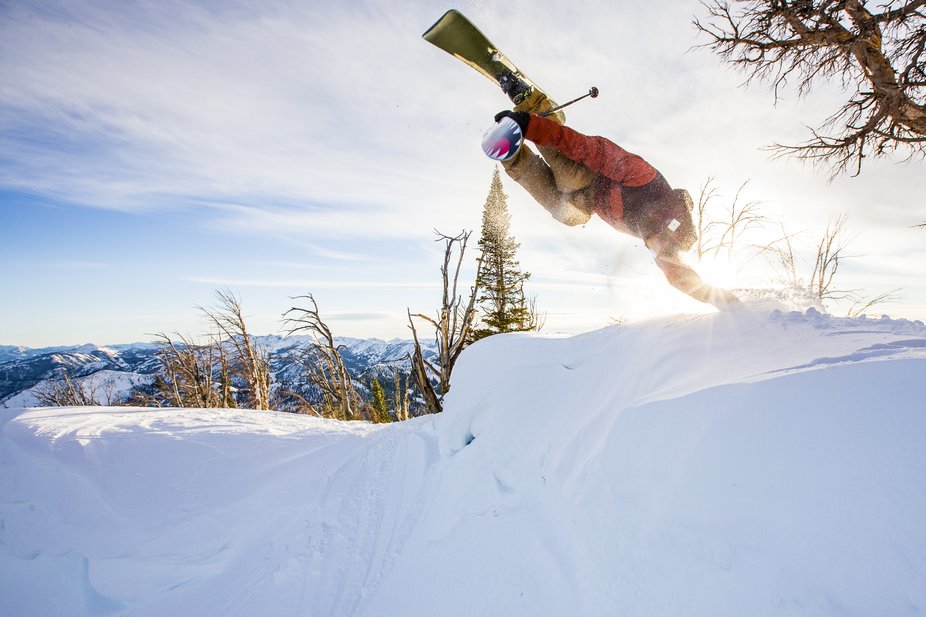
Pollard's ultimate canvas? Snow - Photo: Jamie Walter

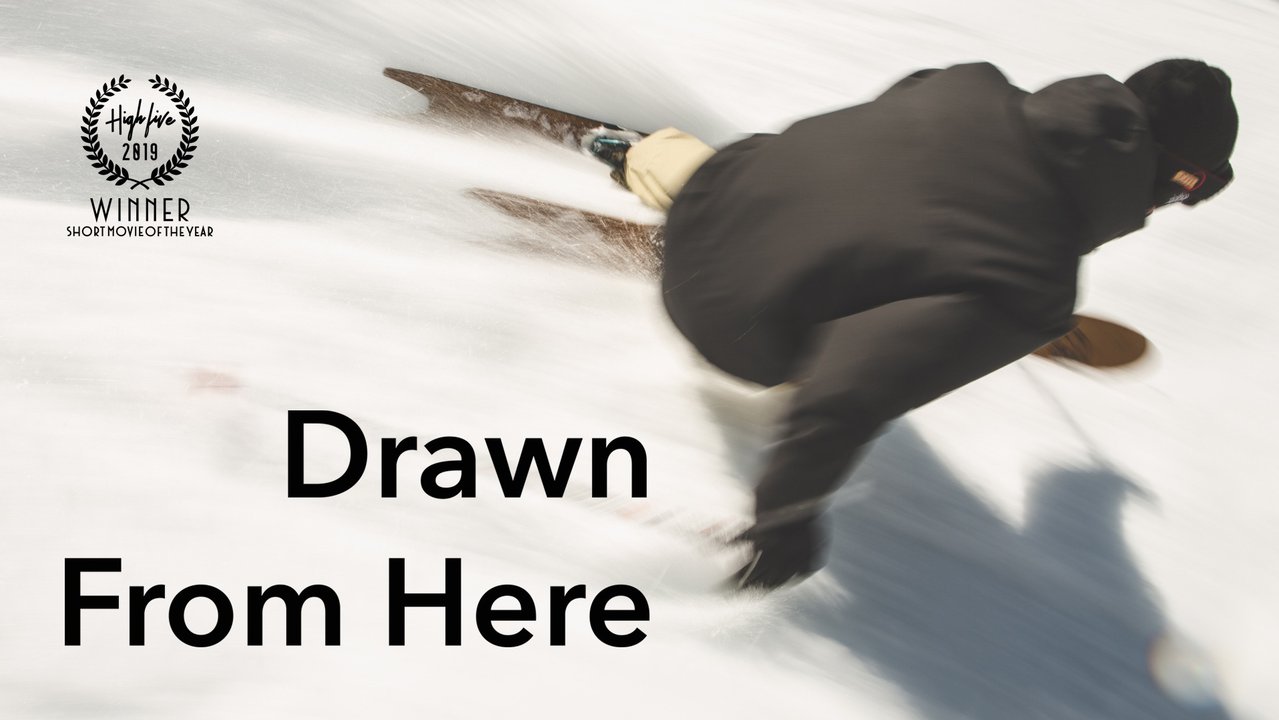
Comments